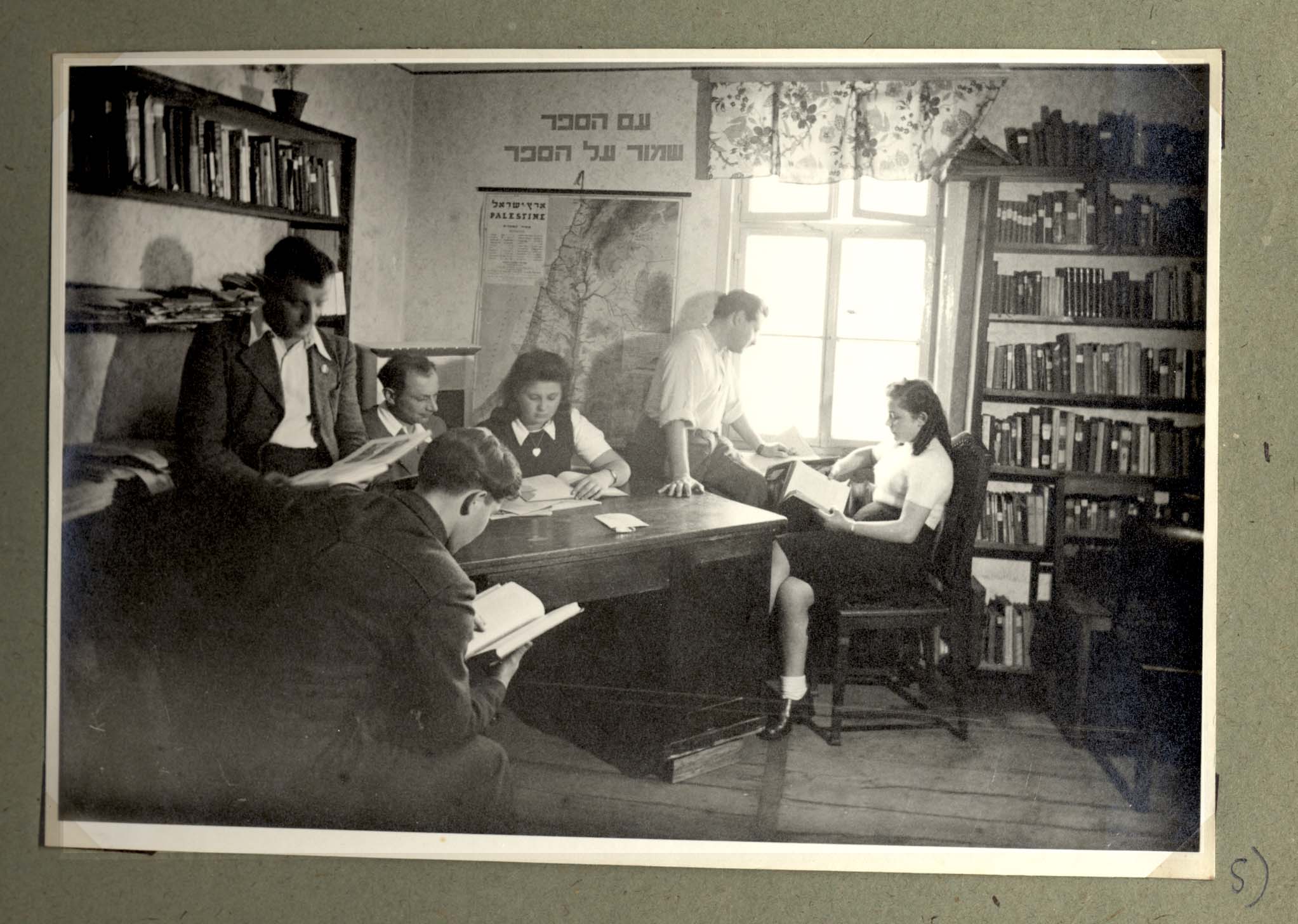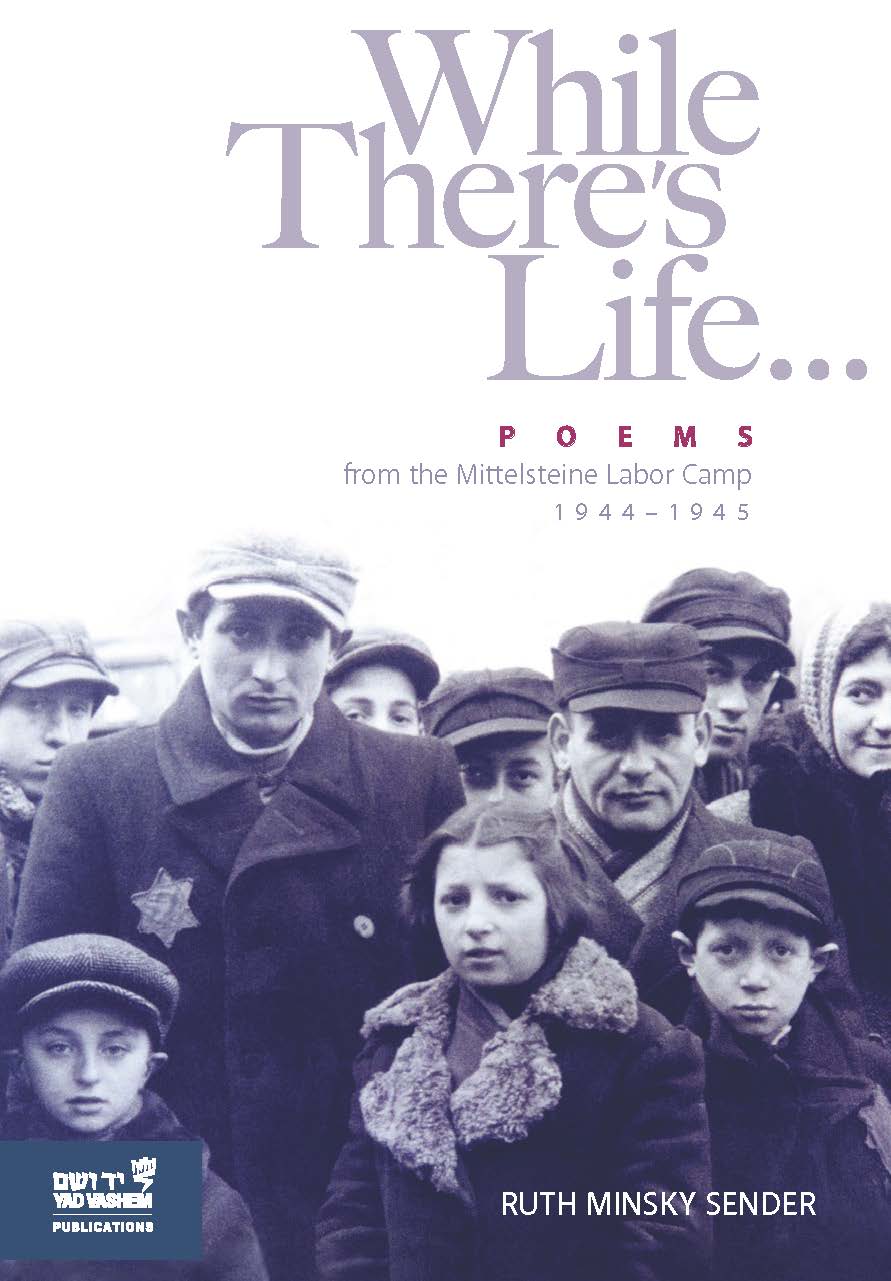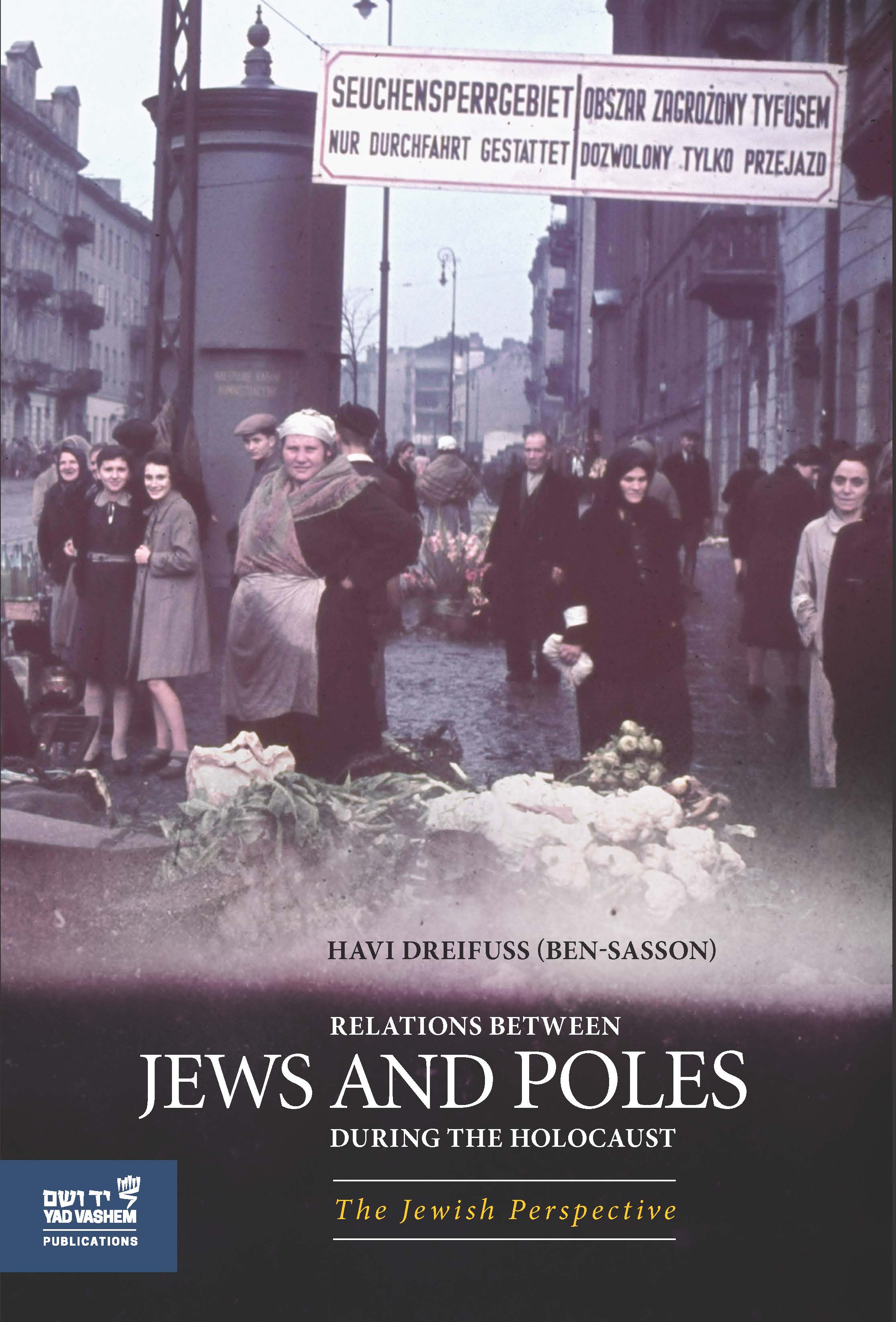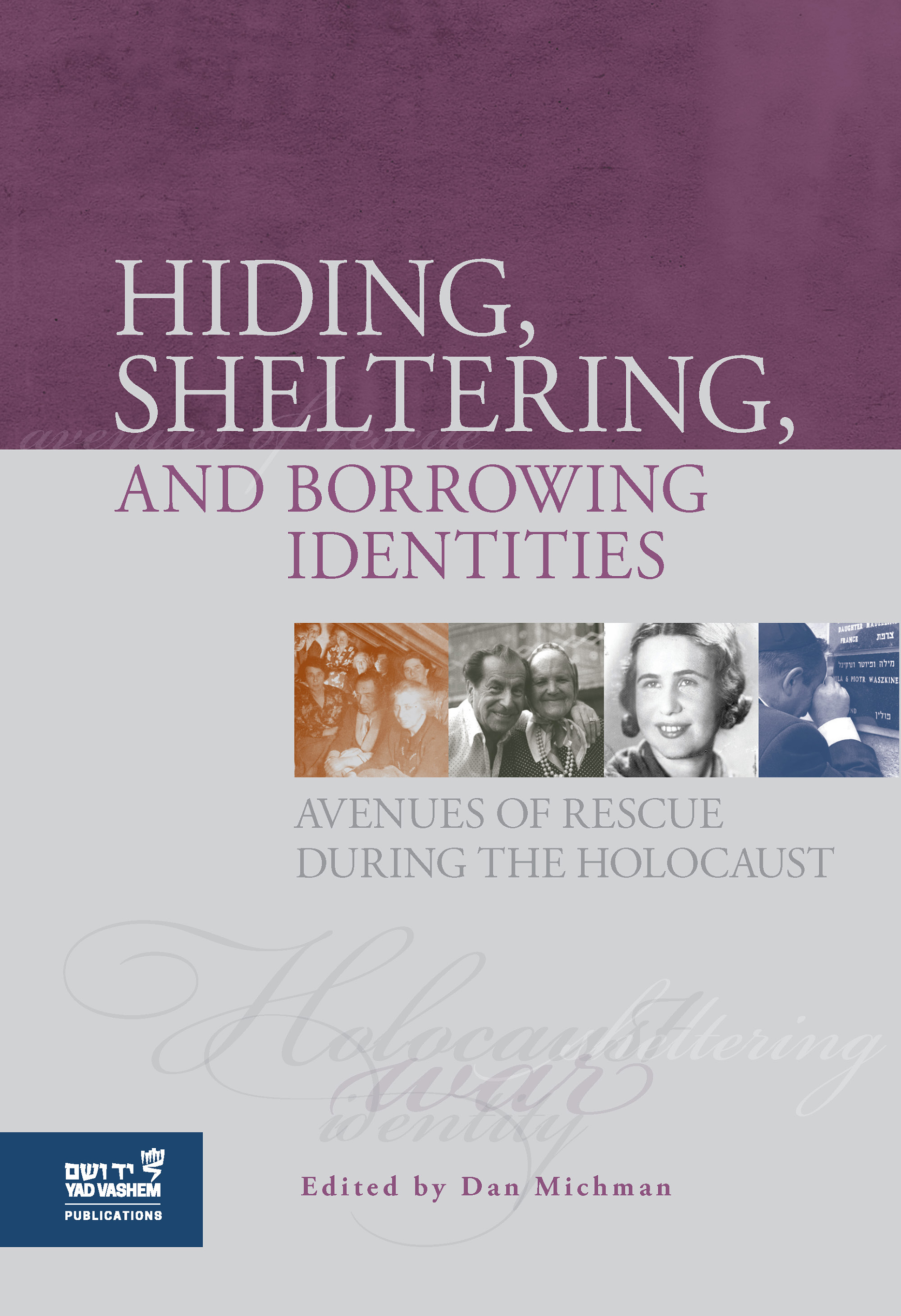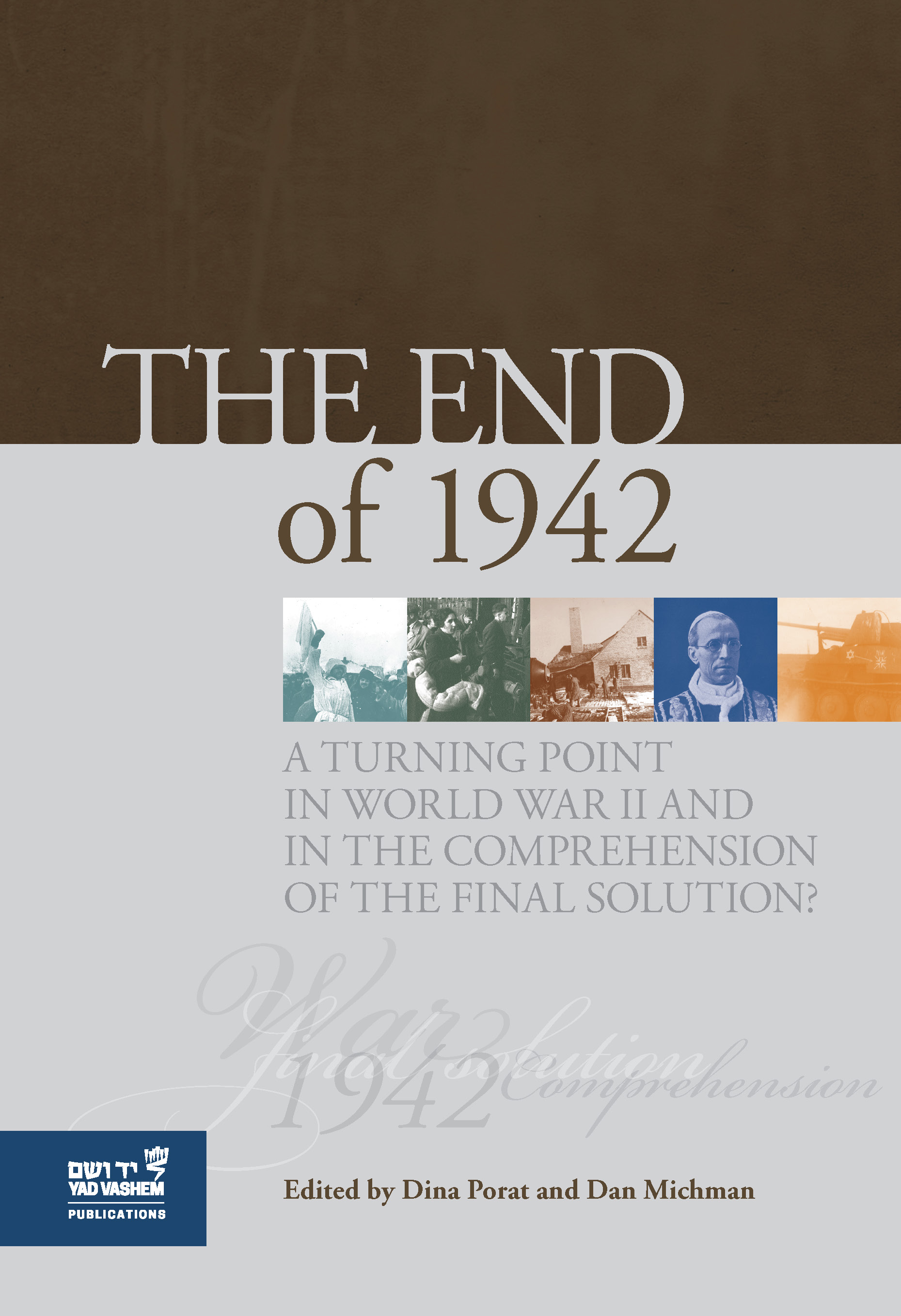About the Library
The Yad Vashem Library is the world's most comprehensive collection of published material about the Holocaust. It contains over 169,000 titles in 64 languages and seeks to collect all material published about the Holocaust, making it available to the reading public and safeguarding it for future generations. Not only does the material lining the shelves of the library contain a wealth of information about the Holocaust, it represents mankind's attempt to grapple with one of the most traumatic events in human history.
Learn more about Yehuda Schwarzbaum
New in Yad Vashem's Publications
While There’s Life... Poems from the Mittelsteine Labor Camp 1944-1945
Ruth Minsky Sender
The poems in this collection were written by Riva Minska (Ruth Minsky Sender) during her incarceration as prisoner #55082 in the Nazi slave labor camp in Mittelsteine, Germany. She wrote them in little notebooks while hiding in her bunk. Every Sunday, she would read these moving verses aloud to the fifty other women in the room. They were her critical and faithful audience. She endeavored to depict scenes from their lives – their anguish, their pain and their longings – to give everyone a little courage and the will to continue. As her mother, Nacha Minska, used to say: “While there’s life, there’s hope.” This was how they spent their Sundays, and anyone who had a bit of talent did their best to bring a little happiness into their tragic lives.
Relations Between Jews and Poles during the Holocaust: The Jewish Perspective
Havi Dreifuss (Ben-Sasson)
Did the Jews of Poland consider their land of birth a partner in the German persecution, or did they view Poland as yet another victim of the murderous Nazi intent? When and why did the prevalent sense of brotherhood that existed at the start of the war end, only to be replaced by harsh feelings of alienation and animosity? What did the Jews write about their Polish neighbors, and in what way did the Jews’ social standing influence their perception of their surroundings? How did the German policy influence the relations that were formed between the Poles and the Jews in occupied Poland?
In this book, Prof. Havi Dreifuss (Ben Sasson) traces the changes in how the Polish Jews erceived their environment. The extensive documentary material upon which Prof. Dreifuss based her research – dozens of diaries and hundreds of documents from archives in Israel and abroad – portray the Polish Jews’ conscious awareness of their environment, expose a glimpse of the realities of life in Poland, and cast light on several of the factors that directly and indirectly influenced their lives – and ultimately their deaths.
Hiding, Sheltering, and Borrowing Identities: Avenues of Rescue during the Holocaust
Edited by Dan Michman
During the immediate aftermath of the Holocaust, the focus of research was directed at the actions of the murderers and at resistance. That situation changed gradually during the 1960s and 1970s, when the rescue of Jews, a major aspect of Holocaust history, started to attract the attention of scholars. Still, the focus was mostly on governments and organizations. The initiation of Yad Vashem’s Righteous Among the Nations program drew public attention to the acts of individual rescuers in areas under Nazi control. Yet even today, many aspects of the rescue activities, especially the aspects of Jewish initiatives and individual experiences, deserve more attention. The International Institute for Holocaust Research’s eighteenth biannual conference, titled “Hiding, Sheltering and Borrowing Identities as Avenues of Rescue during the Holocaust,” brought together a large number of international scholars to discuss new pproaches and the current state of research on the topic. This volume, based on a selection of papers presented at the conference, aims to provide an overview of the multifaceted landscape of academic studies on the rescuers and the rescued.
The End of 1942: A Turning Point in World War II and in the Comprehension of the Final Solution?
Edited by Dina Porat and Dan Michman in cooperation with Haim Saadoun
During the second half of 1942, several events signaled a shift on the fronts of World War II. The failed German summer offensive on the Eastern Front led to the encirclement of the Sixth Army in Stalingrad. In Northern Africa, Operation Torch marked the prelude to the defeat of the German Africa Corps. Since 1941, information had begun to trickle out about the German mass murder program in the occupied territories. The first counteroffensives of the Red Army had led to an initial understanding of the scope of the killings, but additional reliable sources like the Riegner Telegram provided important details and indicated the shift to the industrial extermination of the “Final Solution." As a result, the Allies and Jewish organizations published their first official statements that addressed the German murder operations.
The Allies’ position and their response to the growing evidence of genocidal action remains a matter of debate among historians. Could the leaders of the Allied nations have understood the magnitude of the “Final Solution” sooner? Were they in a situation that would have allowed them to invest more resources to rescue its Jewish victims? This volume includes selected articles by contributing researchers at the International Research Institute’s nineteenth biannual international conference, providing new insights and answers into the developments that unfolded during this critical phase of the war.




